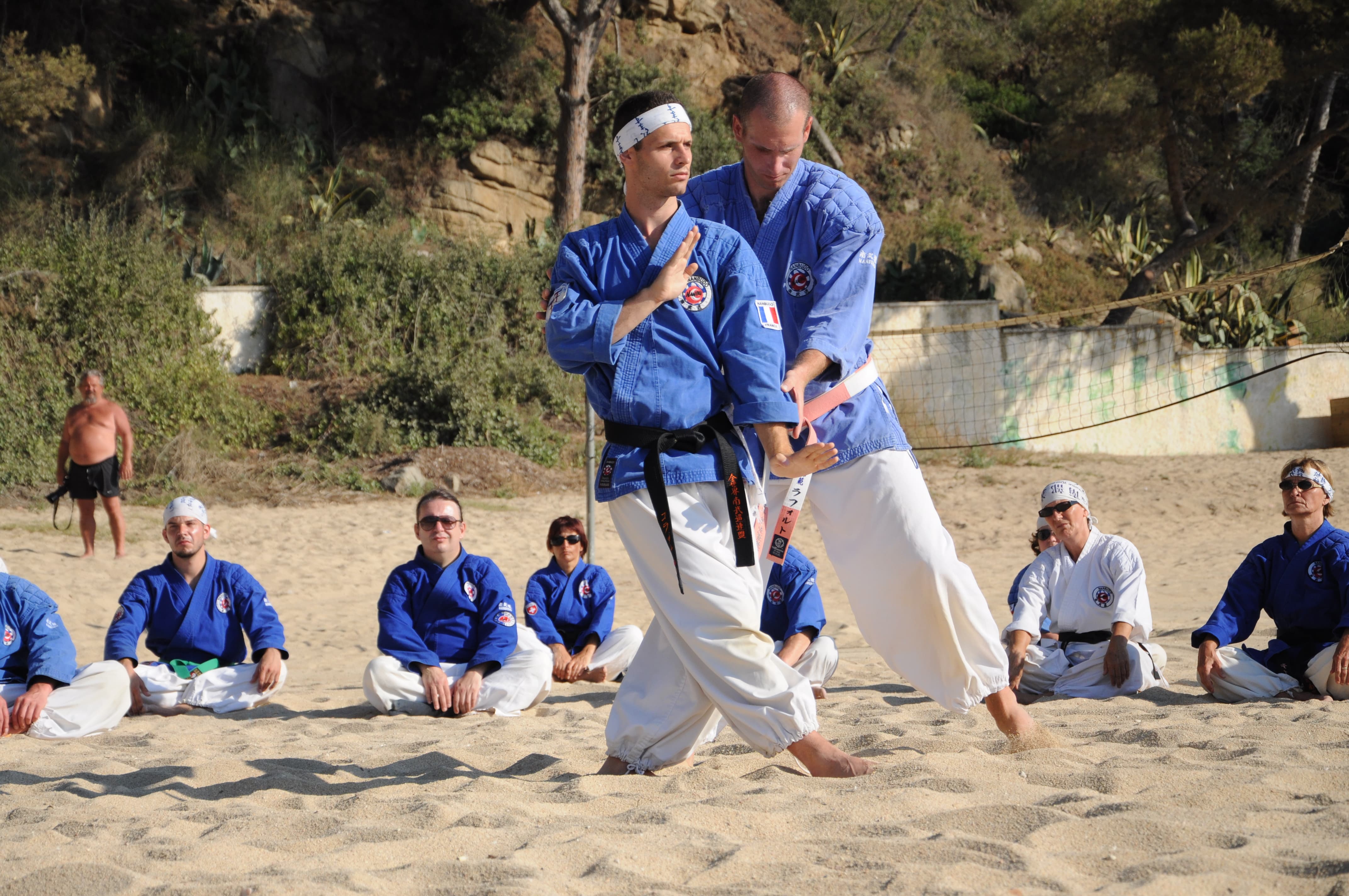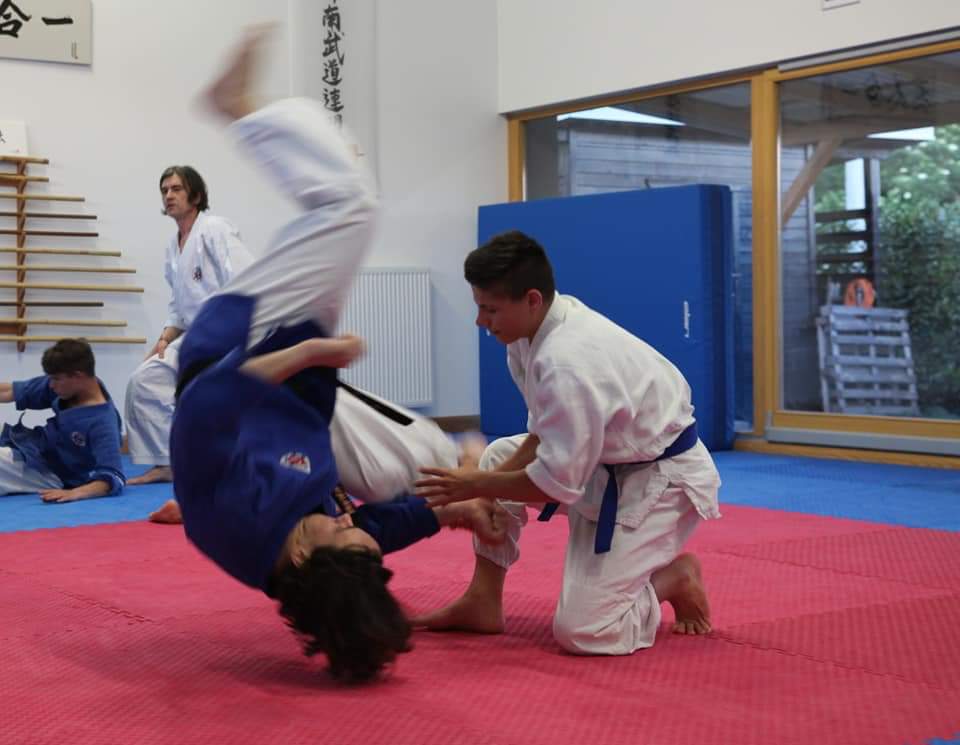Kenshusei
Kenshusei derives its meaning from three Japanese words: Ken, meaning to purify, Shu, meaning mastery, and Sei, meaning disciple. It implies a person who wants to develop in a certain art or by following a certain way of perfection.

It includes the following:
- - a specific program for advancement in all aspects of Nanbudo, verified at the international level (official diplomas of the founder Nanbu Doshu),
- - seminars for future instructors and development of models for their advancement, primarily in terms of training methodology, which is very specific for Nanbudo,
- - variety of seminars, gasshuku, summer and winter seminars and gatherings, taikai, group seminars of several instructors, tokubetsu keiko, special trainings on a specific topic, etc.
Kenshusei program we run, as part of our Dojo, includes the following activities, focused on training future Nanbudo instructors:
- - week-long summer seminars (natsu no gasshuku) which address specific technical details and individual aspects of Nanbudo, as well as certain methodological approaches,
- - shorter winter seminars; (fuyu no gasshuku) which also deal with more specific aspects of Nanbudo,
- - special training (tokubetsu keiko), dedicated to certain sets of techniques (kata) or principles in Nanbudou,
- - interstyle trainings and seminars, where different aspects of Nanbudo are compared with other, more similar arts and teaching methodologies,
- - international seminars, often with several instructors (taikai), which address different approaches within the same skill.
From October 2022, the Croatian Institute of Kinesiology at the Faculty of Kinesiology of the University of Zagreb is implementing a unique training program for professional work in nanbudo, which aims to train existing and future personnel in nanbudo by acquiring basic knowledge in various kinesiology areas, so that they are qualified to carry out various jobs related to nanbudo.
The mentioned training program represents the basic - initial level of training for performing professional work in Nanbudo. Upon completion of the training program and successfully passed exams, the participant receives a Certificate of Training to be able to perform duties of a certified Nanbudo instructor, which is then written in the e-work portfolio.
The classes are divided into three teaching blocks lasting approximately 7 days and are held in Zagreb in the premises of the Faculty of Kinesiology. The approximate duration of the program (from the entrance exam to the end of the course) is 6 months. A person can enroll in the training program for Nanbudo instructor based on the following criteria: completed high school, at least 18 years of age, at least 5 years of activity/practice in Nanbudo, specific skills and knowledge of Nanbudo that the participant has acquired through informal learning and that are then verified through the entrance exam. The program consists of six subjects that the student must take and pass:
General subjects
- Basics of sports medicine
- Basics of pedagogy and communication in sports
- Basics of sports and sports training
Specialist subjects
- Basics of Nanbudo
- Analysis and methodology of teaching the basic technical and tactical elements of Nanbudo
- Basics of planning the teaching of Nanbudo
The plan is for the program to be internationally accredited in the future, and the World Nanbudo Federation (WNF) also gave it support.
Grading program:
Kidoho materials:
WNF letter of support:
NANBU SOTAI NAGE NO WAZA:
BUKI WAZA:
KIDOHO WAZA:
NANBUDO KATA:
NOURYOKU KAIHATSU HO:
RANDORI NO KATA:
RENZOKUWAZA:
